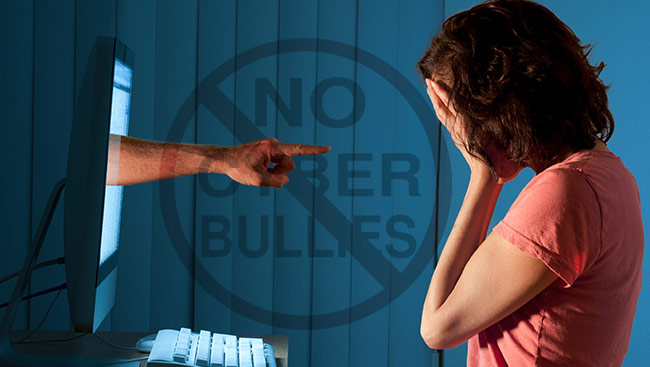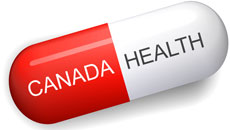Technology and social media is not only changing our relationships and the way we interact, but this medium has both positive and negative outcomes for today’s youth.
With the creation of the Internet in the 1980’s, the world as we knew it forever changed. The globe had suddenly become smaller and you could easily access news or pictures from across the world in seconds. Information was literally at the tips of our fingertips, and as technology evolved, so did our means to communicate and interact online. The early 2000’s saw the emergence of social networking sites like Facebook, which has now resulted in a number of diverse social media applications from Twitter and Instagram to Snapchat and Pinterest.
For all of us, including children growing up in the digital age, the way we interact is changing, and even the way relationships are formed and sustained has become altered to align with the technological world. Instead of picking up the phone to call a friend, you may simply text or Facebook them. Or you may have a number of followers on Twitter and Instagram, many of whom you have never met in real life but you consider them friends and part of your online community. And when one of life’s biggest moments happens, instead of sharing the great news with family and friends in person, people are now posting the news on social media channels first.
Jesse Miller, founder of MediatedReality.com and public speaker, who speaks on social media trends and issues, provides insight on how social media is changing our relationships and the way we interact. “It put a lot more events of our life on the stage, and amplified it as well, you think about family dynamics, divorce and relationships. It also depends culturally, sometimes you just didn’t let the story out, it was about keeping a good face and making sure there wasn’t embarrassment attached to a story. I think that social media now has put a lot of that at everyone’s fingertips, which means the information itself travels in different ways, and I think we see that where it transcends language, there’s photographic evidence and social media also takes away some of those really interesting surprises that we have in life.
More and more people have a tendency to share online before they tell people in real life about events, whether it be marriage, engagement, pregnancy…[and] we hear about major stories that are media friendly, there is so much more access and the bits and pieces that were traditionally going through an editor or not get released to the public, now have the availability to end up on a webpage.”
The medium of technology is one of the greatest debated topics of our time, and the following questions are often contested: Is the evolution of technology a positive or negative thing for today’s society? What are the positive and negative effects of technology on education, children and human interaction? In many ways, technology has improved our lives, which is evident with the advancements in science, education and medicine and health care, while there are those who would say technology has altered society in a negative way and changed the very way humans interact with one another from quality, in-person interaction to online, often faceless interaction.

Technology and the Changing Face of Education
Tim McGeer, principal at John Oliver Secondary School in Vancouver, shares his views on the positive and negative sides of technology in relation to the education field. “It’s been an absolute revolution in learning and living for all of us, the rate of change has been exponential in the sense of technological innovation. And with that, we have incredible opportunities being offered to students and teachers to access learning like we have never been able to before, and yet with that, comes a lot of challenges that we’re grappling with, especially responding to this rapid rate of change.”
He goes on to say that technological devices and social media has changed the way youth interact, students aren’t talking on the phone as much, but are texting, Facebooking or Instagraming instead. There is a repetition of connection, often quick connections, and things can get communicated broadly at a rapid rate.
As users know, there are often links on social media platforms to both good and bad material on the Internet and students of all ages now have access to this unfiltered information without a censor or middle man. According to McGeer, “one of our challenges is helping kids to navigate this new world, which they can access through their phones and variety of devices, so that they can make sense of what they’re seeing and what the implications are for them in the future. They can get themselves out there right away, publish and create a digital footprint within seconds and that’s a footprint that might come back and haunt them or do incredible good in the world. So it really depends on how social media is used with the intention of usages, whether it will have a positive or negative effect.”
Over the last five years or so, schools across British Columbia and Canada are learning how to deal effectively with the negative effects of social media, whether it’s cyberbullying or the distribution of inappropriate images. In the Lower Mainland, many secondary schools saw a Twitter trend in 2013, in which students were posting negative comments about one another, teachers and their schools.
McGeer and his administration decided to tackle this issue head on at John Oliver. They called in Miller, who held workshops with student leaders to raise awareness levels about digital citizenry. Moreover, the school created a digital code of conduct, in which the students had input in the process. Benjamin Segall, who is a student leader, says it was important for the students to be involved in the process, rather than the code of conduct being “a decree from the teachers and admin saying ‘you shall do this’ or ‘you shall not do this’ as it doesn’t have the same impact. When the students created the code of conduct, the students said ‘I choose to be a better citizen online,’ ‘I choose to not bully people online’ and I think it’s much more powerful when students choose to do it because it’s a voluntary thing, and they’re not being forced to participate in this.”
In regards to the creation of the code of conduct, McGeer says John Oliver, along with schools across the world, are seeing the negative effects of social media and it was important for students to learn about “the damage they were doing – images or messages that were hurtful to themselves or other people. One of the reasons that this was going on was many of the students didn’t realize or think they were occupying the space with the adults in the room. So, we spent a lot of time and energy developing with them an understanding of what the implications are of social media usage, both positive and negative – what can follow you, digital tattoo or imprint you’re leaving or the hurt you could cause to other people – and to let them know that we’re there with them, as long as it’s used in a positive way, we encourage it, we think its fabulous, we’re absolute supporters of technology.”
McGeer also shared a challenge that many teachers and administrators face, which is a distracted mind in the classroom. The goal is for students to only use their devices for learning while in school. This was an additional reason for the creation of the code of conduct: “we want to learn and create together, and have a measure of control about how and when we are going to use technology, and the values around the usage of it.”
Segall tells us that since the code of conduct came into place at John Oliver, the negative incidents on social media has significantly decreased. And he says making the code of conduct has “opened the eyes of some of the students to see there is bigger ramifications, and to see that things that you see wrong in real life are also wrong online.”
The Kamloops Case
Earlier this year, Kamloops RCMP announced they had been “contacted by School District 73 [Kamloops/Thompson] after learning about the alleged exchange of inappropriate material” between students. On February 12, 2014, three male youths were arrested in connection with the ongoing investigation and charges of ‘Distribution of Child Pornography” have been laid against all three males, as per Cpl. Cheryl Bush via a statement.
“Whether it’s Kamloops or anywhere else in the country, we’ve seen this across the board with kids of all ages, of all ethnicities and this is a major issue as it applies to entitlement of communications. Majority of kids don’t realize that one photo that they sent to a friend might be something that becomes front page news tomorrow,” says Miller.

“As it applies, we have to recognize that our kids are at stage in life, where they’re curious human beings, where they’re going to share content, but now that they live in a digitalized world where that content can be generated without a middle man, without a sense of self being developed. Think about Polarid cameras and how they allowed people to circumvent without film, we have instant gratification as it applies to technology and we have to really arm our kids with value of self,” he adds.
Miller says that children and youth need to be taught the value of self, for example, ask the questions – Are you prepared to have that photo in a police officer’s hand tomorrow? Are you prepared to face the consequences of sharing content that can be defined as child pornography? “The hard part is that we see thousands of kids sharing information, not every single one of them will get charged, but police don’t want to charge those kids who are exploring their human development. What we’re looking at, when you hear these big issues is the very vicious sharing of content to make the other person’s life miserable and I think that’s where we have to focus, on the kids who are inclined to want to collect photos,” he adds.
The youth involved in the Kamloops case have not been identified as per sections 110 and 111 of the Youth Criminal Justice Act, as they are under the age of 18. At the time of publication, the investigation was ongoing and Kamloops RCMP will continue to work with School District 73.
Bullying Prevention Strategy
Minister of Justice and Attorney General of BC Suzanne Anton says “We recognize that bullying is a serious concern for many British Columbians, and as such, Premier Christy Clark has made it a top priority for our government. We believe Canadians, in particular children and youth, will be safer while online with the proposed changes to the Criminal Code as outlined in the federal report on cyberbullying released last July.”
Following the suicide of Rehtaeh Parsons in April 2013, Attorney General of Canada Peter MacKay released a federal/provincial report in July. “The report recommends creating a new law against non-consensual distribution of intimate images and enhancing current criminal law responses to bullying, including cyberbullying,” MacKay said. It also “recommends modernizing – subject to appropriate judicial oversight – investigative powers in the Criminal Code to facilitate the investigation of criminal activity involving electronic communications.”
Furthermore, the report states that all levels of government will work together to address the issue of cyberbullying in a “comprehensive manner, including prevention, education, and awareness-raising activities.”
“For anyone who has kids or works with kids these days, keeping up with the latest apps, social media sites and online tools can seem impossible. But through education, dialogue and open communication, it’s possible to help children safely navigate the online world,” explains BC Minister of Education Peter Fassbender. “Through ERASE, our provincial bullying prevention strategy, about 20 students are being selected from across the province to advise myself and the Premier on various aspects of bullying prevention. Their first task will be to develop social media guidelines for school districts to help educate students about appropriate online behaviour and the negative consequences of social media when it’s used inappropriately.”
Moreover, the government has launched the ERASE Reporting Tool for youth to safely and anonymously report bullying. Some of these reports have allowed school district staff to get immediate help and resources to students. Reylyan Labrador, student leader at John Oliver, says this online tool “makes a difference. If I was being bullied, I wouldn’t want to go straight to an adult because of the fear factor, so I like the anonymous aspect.”
Conclusion
As the debate about technology and social media will no doubt continue, it is important to remember that any medium has a positive and negative side to it – it’s just about how you choose to use it. In the terms of children and youth, communication is key between parents/teachers and children/students to ensure online safety and a greater awareness of digital citizenship while navigating the online world.
Miller sums it up best, “I think we all play a role, whether it be inside the home, in the community and in schools, Digital citizenship plays a huge role in engaging communications, and like schools that have a role in developing good citizens, it does come down to how do we engage youth, and how do we tell youth about the power of technology.
A lot of kids use technology as a right compared to a privilege, and when we have elementary school kids, who have cell phones and can bypass the information filters that schools have in place, there is a needed avenue for education, especially when it applies to communication. And because parents give their kids devices from cell phones to iTouch’s that are web enabled; can access information 24 hours a day; and bypass school and home computers, we all play a significant role in educating youth.”




